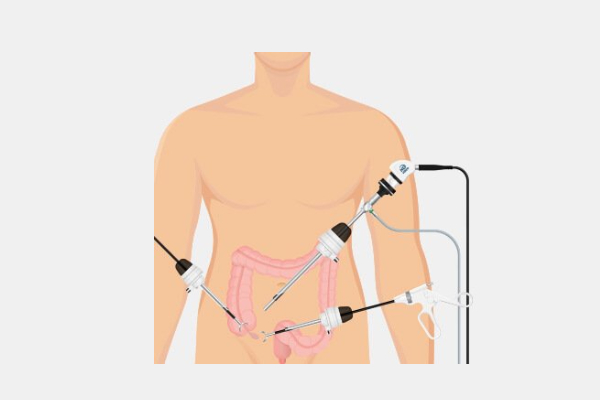What is Laparoscopic Appendectomy?
The appendix is a narrow, finger-shaped organ located in the lower right side of the belly. It is connected to the large intestine, and has no function in humans. Appendectomy is done as an emergency surgery for appendicitis because the appendix has become inflamed and needs to be removed. If it is not removed, it could burst and cause infection called peritonitis in the abdomen. A laparoscopic or “lap” appendectomy is a minimally invasive surgery to remove the appendix through several small incisions, rather than through one large one. Recovery time from the lap appendectomy is short.

What are the Symptoms of Appendicitis?
- Abdominal pain may begin in the upper-middle abdomen then develop to sharp localized pain
- Abdominal pain may be worse when walking or coughing
- Fever usually occurs within several hours
- Loss of appetite
- Nausea
- Vomiting
- Constipation
- Rectal tenderness
- Chills and shaking
What Are The Risks of Waiting To Have My Appendix Removed?
Since the appendix is infected, it needs to be removed to ensure that the organ does not rupture. Early, non-ruptured appendix usually can be removed laparoscopically, but if the infection has advanced, it is more difficult to use this minimally invasive surgery. In these cases, the surgeon may recommend that you have an open procedure. A ruptured appendix is a life-threatening emergency, so patients should not wait to have surgery.
How Is An Appendectomy Performed?
- Minimally invasive surgery involves inserting special instruments and a laparoscope through small incisions in the abdomen. The laparoscope is a thin, lighted instrument with a small camera that sends pictures of the inside of your body to a video screen. Your surgeon sees the inside of your abdomen on the screen while performing the surgery. Minimally invasive surgery generally involves a faster recovery and less pain than open surgery. This is because it causes less trauma to tissues and organs. Your surgeon makes several small incisions instead of a larger one used in open surgery. Your surgeon threads surgical tools around structures, such as muscle, instead of cutting through or displacing them as in open surgery.
- Open surgery involves making a large incision in the abdomen. Open surgery allows your surgeon to view and access the surgical area directly. Open surgery generally involves a longer recovery and more pain than minimally invasive surgery. This is because it causes more trauma to tissues. Open surgery requires a larger incision and more cutting and displacement of muscle and other tissues than minimally invasive surgery. Despite this, open surgery may be a safer or more effective method for certain patients.
Book Your Appointment Today
Book your appointment with Dr. Ujwal Zambare he is having 12 years of experience in Gastro-intestinal surgery, oncology, minimally invasive surgery and Liver, Pancreas, Biliary tract surgery.

Dr. Ujwal Zambare
MBBS, MS (General Surgery), DNB (Gastrointestinal Surgery)
Fellowship in Minimal Access Surgery
Copyright © 2021. Dr. Ujwal Zambare – Liver, Pancreas, Biliary Tract Surgery Specialist in Pune. | All Rights Reserved.
All Text and Images is for information of Patients and Public and doesn’t replace medical practitioners advice. Visit doctor for medical advice.



